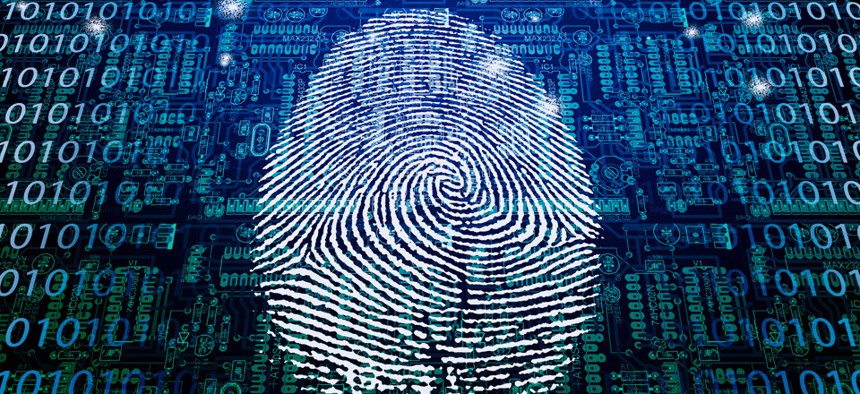Is a Biometric Immigration Exit System Worth $7 Billion?

Bruce Rolff/Shutterstock.com
And is the technology even there for it?
The push to stand up biometric checkpoints for foreigners departing the country would not, right now, yield expected benefits, such as quickly spotting people with invalid visas, according to a new report from the Bipartisan Policy Center.
The advantages of an immigration entry-exit system based on digitized physical markers, like fingerprint images, include timely and accurate identification, say many proponents, including the Homeland Security Department. Other pluses include precise statistics on the number of people who have outstayed their visas. But biographic systems based on names and birthdates offer many of the same benefits and are more robust than the current crop of underdeveloped biometric machines, the center found.
"Any solution implemented in the near- or medium-term would likely to be susceptible to fraud," states the report, which was released on Tuesday. "The value-added calculus shows that while biometric exit is certainly worth pursuing, biographic exit can achieve most of the goals of an entry-exit system."
After the Sept. 11, 2001 terrorist attacks, DHS began testing technology to check the fingerprints and photos of visitors entering and exiting the United States. The exit component of the system still does not exist. Several proposals for comprehensive immigration reform would require biometric entry-exit systems.
Biometrics would offer no significant gain over biographic information for statistical purposes relative to cost, according to the new research. Immigration reforms approved in the Senate last year would require a computerized biometric exit system that, according to the Los Angeles Times, could cost more than $7 billion.
As for helping authorities with immigration enforcement in the field, exit data would be of little use, whether biometric or biographic, the center states. Authorities already know the apprehended individual is present in the country, standing in front of them, so exit records would be redundant for this objective.
The advantage of biometrics would be more accurate matches and less fraud. Spelling blunders, multiple identities, and other data errors all make biographic data more susceptible to error, according to the report. For example, recently it was discovered that Boston Marathon bomber Tamerlan Tsarnaev’s name was misspelled on a manifest list for a flight to Russia, resulting in the FBI missing a lead while investigating his terrorist ties.
In February, Homeland Security officials announced they are interested in pursuing a biometric exit system based on facial and iris recognition at land border crossings. Officials said their goal is a system that can biometrically identify more than 97 percent of foreigners.
But biometric matching has yet to prove itself.
DHS pilots have not demonstrated that a high level of accuracy can be attained, the study states. During technology trial runs in 2009, for instance, just 82 percent of biometric exit records were matched to a biometric entry record.
"Until DHS can channel this potential into a proven operable solution, it is not clear whether implementing biometric exit collection would add much value," the report states.
(Image via Bruce Rolff/Shutterstock.com)



